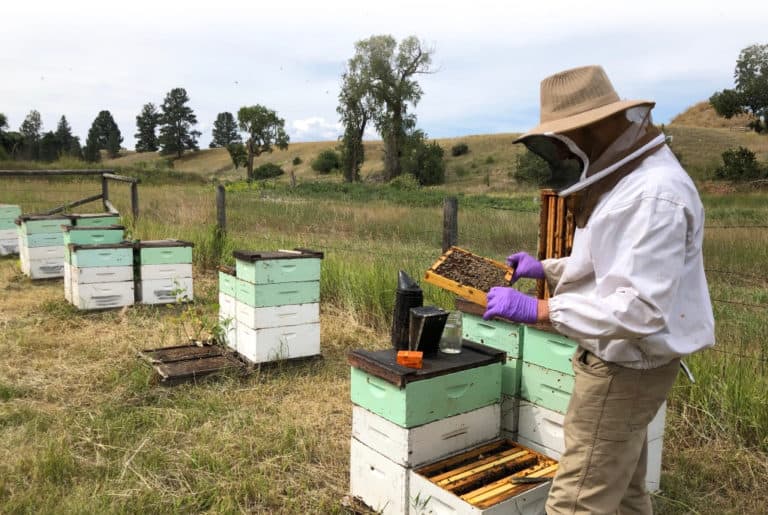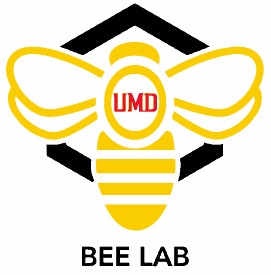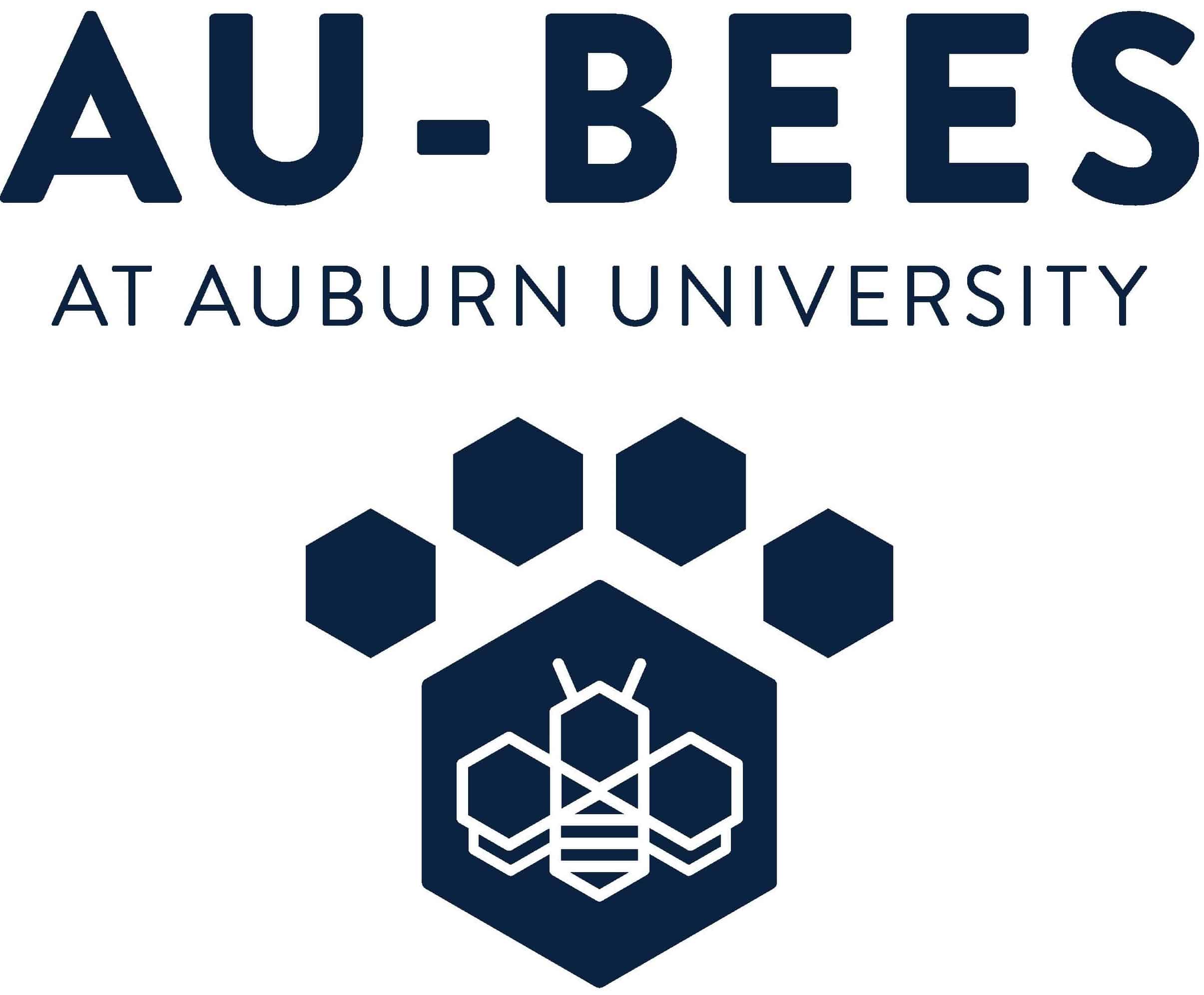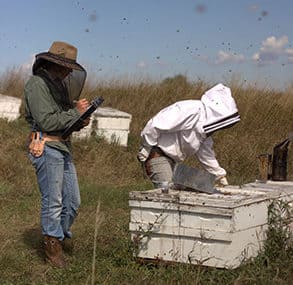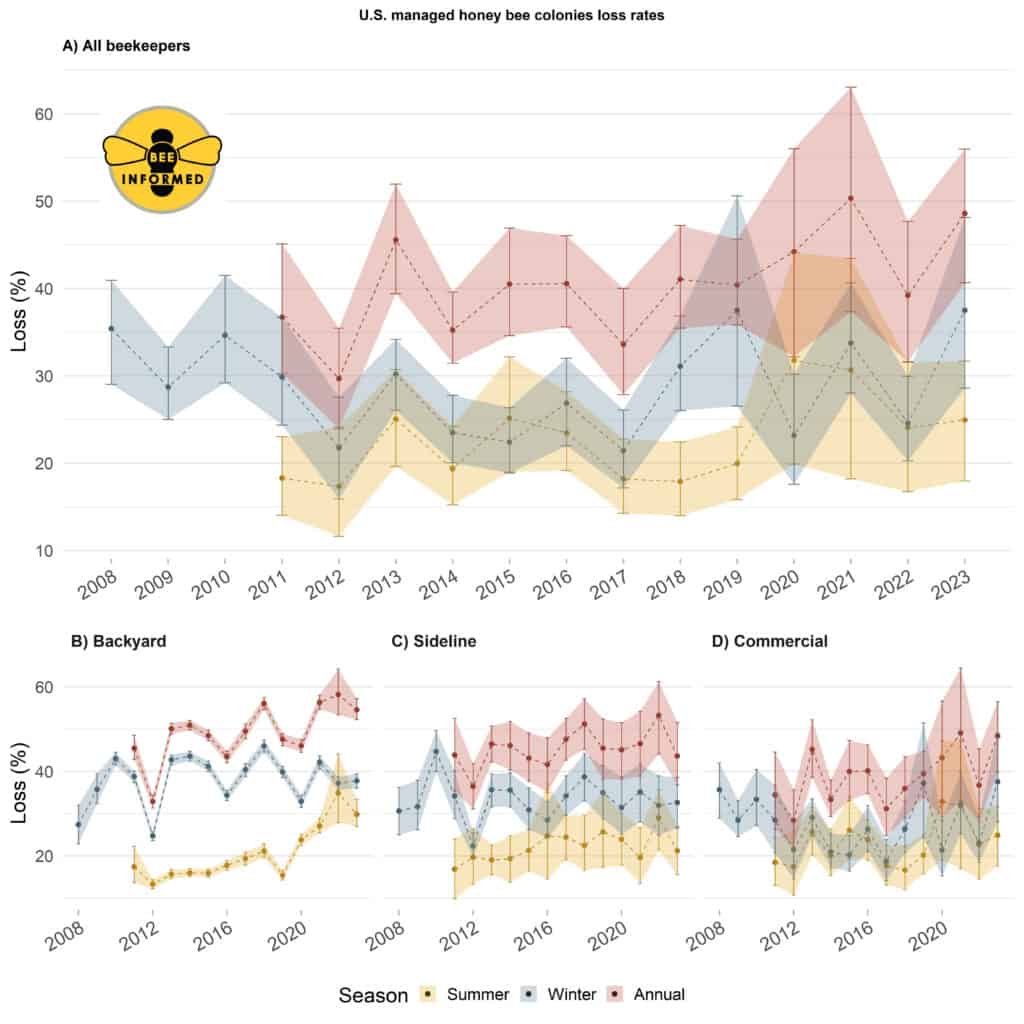
Thank you!
The survey grew over the years, with the help of many supporting organizations (Project Apis m., AIA, American Beekeeping Federation, Eastern Apiculture Society, Honey Bee Health Coalition, American Bee Journal, Bee Culture, multiple research institutions and many many bee clubs!) that help by spreading the word and encouraging participation. We wouldn’t be able to do any of this work without them, and without our participating beekeepers.
Peer reviewed scientific publications associated with the survey:
Aurell, D., Bruckner, S., Wilson, M., Steinhauer, N., and Williams, G. R. (2023) ‘A national survey of managed honey bee colony losses in the USA: Results from the Bee Informed Partnership for 2020-21 and 2021-22’, Journal of Apicultural Research, accepted Aug 16, 2023
Bruckner, S., Wilson, M., Aurell, D., Rennich, K., vanEngelsdorp, D., Steinhauer, N. and Williams, G.R. (2023) ‘A national survey of managed honey bee colony losses in the USA: results from the Bee Informed Partnership for 2017–18, 2018–19, and 2019–20’, Journal of Apicultural Research, pp. 1–15. Available at: https://doi.org/10.1080/00218839.2022.2158586.
Overturf, K.A., Steinhauer, N., Molinari, R., Wilson, M.E., Watt, A.C., Cross, R.M., vanEngelsdorp, D., Williams, G.R. and Rogers, S.R. (2022) ‘Winter weather predicts honey bee colony loss at the national scale’, Ecological Indicators, 145, p. 109709. Available at: https://doi.org/10.1016/j.ecolind.2022.109709.
Engebretson, J.M., Nelson, K.C., Steinhauer, N., Rennich, K., Spivak, M. and vanEngelsdorp, D. (2022) ‘Perceptions of honey bee management information sources among backyard and sideliner beekeepers in the United States’, Journal of Rural Studies, 96, pp. 190–197. Available at: https://doi.org/10.1016/j.jrurstud.2022.10.020.
Kulhanek, K., Steinhauer, N., Wilkes, J., Wilson, M., Spivak, M., Sagili, R.R., Tarpy, D.R., McDermott, E., Garavito, A., Rennich, K. and vanEngelsdorp, D. (2021) ‘Survey-derived best management practices for backyard beekeepers improve colony health and reduce mortality’, PLOS ONE, 16(1), p. e0245490. Available at: https://doi.org/10.1371/journal.pone.0245490.
Steinhauer, N., vanEngelsdorp, D. and Saegerman, C. (2021) ‘Prioritizing changes in management practices associated with reduced winter honey bee colony losses for US beekeepers’, Science of The Total Environment, 753, p. 141629. Available at: https://doi.org/10.1016/j.scitotenv.2020.141629.
Haber, A.I., Steinhauer, N.A. and vanEngelsdorp, D. (2019) ‘Use of Chemical and Nonchemical Methods for the Control of Varroa destructor (Acari: Varroidae) and Associated Winter Colony Losses in U.S. Beekeeping Operations’, Journal of Economic Entomology, 112(4), pp. 1509–1525. Available at: https://doi.org/10.1093/jee/toz088.
Thoms, C.A., Nelson, K.C., Kubas, A., Steinhauer, N., Wilson, M.E. and vanEngelsdorp, D. (2019) ‘Beekeeper stewardship, colony loss, and Varroa destructor management’, Ambio, 48(10), pp. 1209–1218. Available at: https://doi.org/10.1007/s13280-018-1130-z.
Kulhanek, K., Steinhauer, N., Rennich, K., Caron, D.M., Sagili, R.R., Pettis, J.S., Ellis, J.D., Wilson, M.E., Wilkes, J.T., Tarpy, D.R., Rose, R., Lee, K., Rangel, J. and vanEngelsdorp, D. (2017) ‘A national survey of managed honey bee 2015–2016 annual colony losses in the USA’, Journal of Apicultural Research, 56(4), pp. 328–340. Available at: https://doi.org/10.1080/00218839.2017.1344496.
Seitz, N., Traynor, K.S., Steinhauer, N., Rennich, K., Wilson, M.E., Ellis, J.D., Rose, R., Tarpy, D.R., Sagili, R.R., Caron, D.M., Delaplane, K.S., Rangel, J., Lee, K., Baylis, K., Wilkes, J.T., Skinner, J.A., Pettis, J.S. and vanEngelsdorp, D. (2015) ‘A national survey of managed honey bee 2014–2015 annual colony losses in the USA’, Journal of Apicultural Research, 54(4), pp. 292–304. Available at: https://doi.org/10.1080/00218839.2016.1153294.
Lee, K.V., Steinhauer, N., Rennich, K., Wilson, M.E., Tarpy, D.R., Caron, D.M., Rose, R., Delaplane, K.S., Baylis, K., Lengerich, E.J., Pettis, J., Skinner, J.A., Wilkes, J.T., Sagili, R., vanEngelsdorp, D. and Partnership, for the B.I. (2015) ‘A national survey of managed honey bee 2013–2014 annual colony losses in the USA’, Apidologie, pp. 1–14. Available at: https://doi.org/10.1007/s13592-015-0356-z.
Steinhauer, N.A., Rennich, K., Wilson, M.E., Caron, D.M., Lengerich, E.J., Pettis, J.S., Rose, R., Skinner, J.A., Tarpy, D.R., Wilkes, J.T. and vanEngelsdorp, D. (2014) ‘A national survey of managed honey bee 2012-2013 annual colony losses in the USA: results from the Bee Informed Partnership’, Journal of Apicultural Research, 53(1), pp. 1–18. Available at: https://doi.org/10.3896/IBRA.1.53.1.01.
Spleen, A.M., Lengerich, E.J., Rennich, K., Caron, D., Rose, R., Pettis, J.S., Henson, M., Wilkes, J.T., Wilson, M.E., Stitzinger, J., Lee, K., Andree, M., Snyder, R., vanEngelsdorp, D., and for the Bee Informed Partnership (2013) ‘A national survey of managed honey bee 2011–12 winter colony losses in the United States: results from the Bee Informed Partnership’, Journal of Apicultural Research, 52(2), pp. 44–53. Available at: https://doi.org/10.3896/IBRA.1.52.2.07.
vanEngelsdorp, D., Caron, D., Hayes, J., Underwood, R., Henson, M., Rennich, K., Spleen, A., Andree, M., Snyder, R., Lee, K., Roccasecca, K., Wilson, M.E., Wilkes, J., Lengerich, E. and Pettis, J. (2012) ‘A national survey of managed honey bee 2010-11 winter colony losses in the USA: results from the Bee Informed Partnership’, Journal of Apicultural Research, 51(1), pp. 115–124. Available at: https://doi.org/10.3896/IBRA.1.51.1.14.
vanEngelsdorp, D., Hayes, J., Underwood, R.M., Caron, D. and Pettis, J. (2011) ‘A survey of managed honey bee colony losses in the USA, fall 2009 to winter 2010’, Journal of Apicultural Research, 50(1), pp. 1–10. Available at: https://doi.org/10.3896/IBRA.1.50.1.01.
vanEngelsdorp, D., Hayes, J., Underwood, R.M. and Pettis, J.S. (2010) ‘A survey of honey bee colony losses in the United States, fall 2008 to spring 2009’, Journal of Apicultural Research, 49(1), pp. 7–14. Available at: https://doi.org/10.3896/IBRA.1.49.1.03.
vanEngelsdorp, D., Hayes, J., Underwood, R.M. and Pettis, J. (2008) ‘A Survey of Honey Bee Colony Losses in the U.S., Fall 2007 to Spring 2008’, PLoS ONE, 3(12). Available at: https://doi.org/10.1371/journal.pone.0004071.
vanEngelsdorp, D., Underwood, R., Caron, D. and Hayes, J. (2007) ‘An estimate of managed colony losses in the winter of 2006-2007: A report commissioned by the apiary inspectors of America’, American Bee Journal, 147(7), pp. 599–603. Available at: https://bee-health.extension.org/wp-content/uploads/2019/08/AnEstimateofManagedColonyLossesintheWinterof2006-2007.pdf
